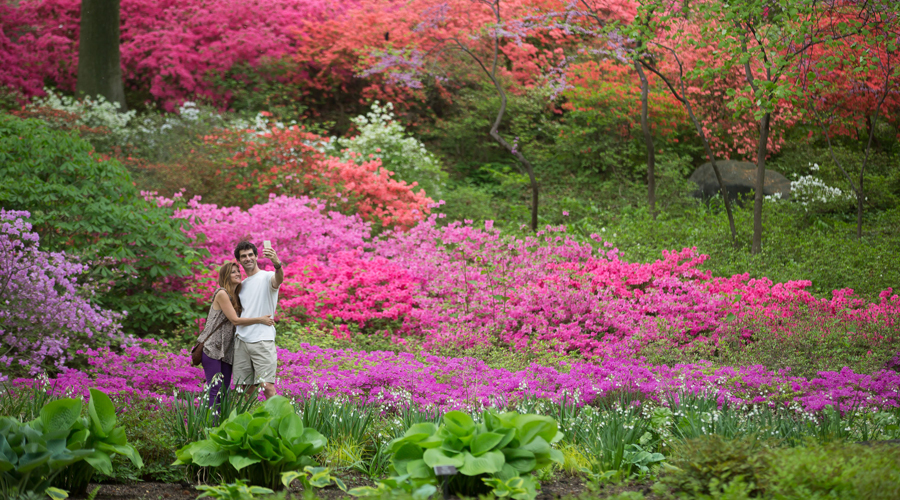To help mark the recent release of the American Gardens Forever stamps, here are three facts about public gardens in the United States.
1. There are several kinds of public gardens. The American Public Gardens Association defines a public garden as “an institution that maintains collections of plants for the purposes of public education and enjoyment, in addition to research, conservation and higher learning.” To achieve public status, a garden must be open to visitors and staffed by trained professionals. Public gardens include botanical gardens, arboreta, cemeteries, zoos, college and university campuses, historic homes and municipal parks.
2. The New York Botanical Garden is the nation’s largest public garden. The 250-acre garden, located in the Bronx in New York City, is a national historic landmark that encompasses 50 specialty gardens and collections that feature more than 1 million plants. Other large public gardens include the Portland Japanese Garden (Oregon), the Desert Botanical Garden (Phoenix) and the U.S. Botanic Garden (Washington, DC).
3. The American Gardens stamps feature a variety of public gardens. The 20-stamp pane features 10 photographs taken at Biltmore Estate Gardens (North Carolina), Brooklyn Botanic Garden (New York), Chicago Botanic Garden, Coastal Maine Botanical Gardens, Dumbarton Oaks Garden (Washington, DC), Huntington Botanical Gardens (California), Alfred B. Maclay Gardens State Park (Florida), Norfolk Botanical Garden (Virginia), Stan Hywet Hall & Gardens (Ohio) and Winterthur Garden (Delaware).
